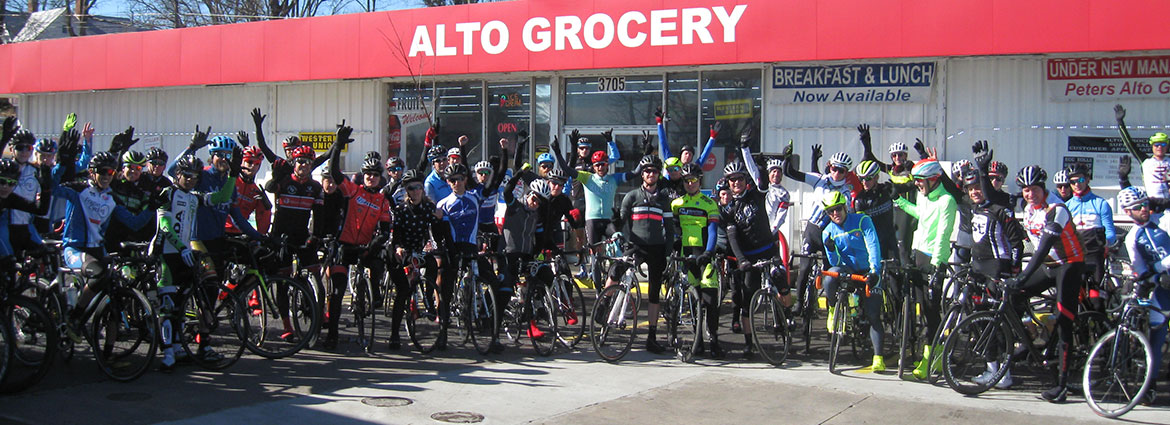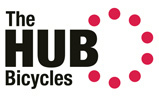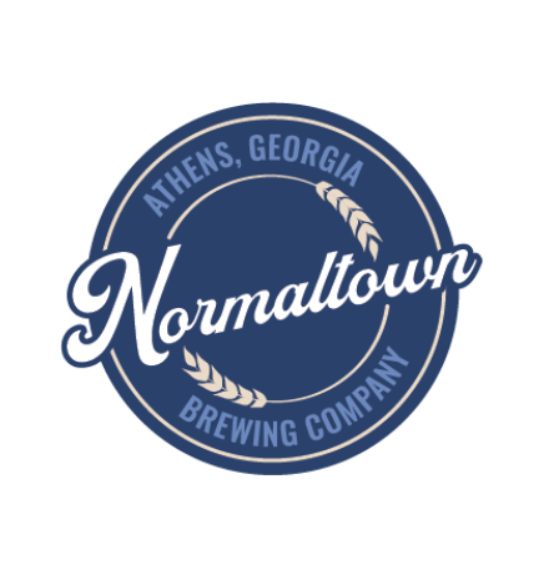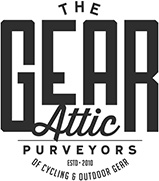Ride the Rockies 2013: The Flight of the Stork
Ride the Rockies 2013: The Flight of the Stork
Ride the Rockies (RTR) is a weeklong affair in which an army of 2,000 cyclists from across the country and even the globe zig and zag their way across the great state of Colorado for one solid week. The RTR is an annual event and generally averages about 500 miles over seven days. The route changes from year to year, but always passes through the most scenic and the most majestic parts of the state. With all the great, wide open spaces in Colorado, the plenitude of high mountain ranges, and the hippest cowboy towns in the U.S., the RTR route planners have plenty of options.
In the year 2013, RTR was celebrating its 28th year and one of my pedal-pounding soul mates, Professor Scott Thomas, had ridden two RTR events in the past. I’d never taken part in RTR and the dastardly Pedal Professor urged me to do so. He promised that RTR was sure to please. Having lived in Athens for about five years before moving to California, the Pedal Professor was also keenly aware that there is a store of fellow travelers here who share his love of an epic adventure, so he leaned in hard and applied the full court press.
The fact that Dr. Thomas is a “traveler” and not a “tourist” made RTR an easy sale. A traveler is a person who immerses himself or herself into the soul and into the culture of the place visited. A traveler strays far and wide from the well-worn path and experiences what is actually there. A traveler, at times, crawls across broken glass. In the words of the revered iconoclast and environmental rabble-rouser Edward Abbey, “A man on foot, on horseback or on a bicycle will see more, feel more, enjoy more in one mile than the motorized tourists can in a hundred miles.” (Desert Solitaire).
Contrariwise, a tourist is blind to his surroundings and sees only what he expects to see. He stands on the sidelines with his head in a box. A tourist takes nothing from a visit other than a bauble or a souvenir. Instead of walking barefoot across the dirt floor, a tourist is carried across the rough earth like an archbishop in a litter. Riding across Colorado on a bicycle, using nothing but my own pedal power, in my humble opinion, was a surefire way to be a “traveler” and not “tourist.” Four other fellow travelers from Athens signed up for the event.
On the morning of June 6, Frank Crumley, Mike Edmonds, Russ Foster, Ryan Marsh and myself boarded a plane in Atlanta and took off for Denver. In Denver we planned to take a puddle-jumper to Telluride where we would hook up with Dr. Thomas and the RTR journey would begin. Unfortunately a last minute snafu derailed the Pedal Professor’s plan and he was forced to abandon ship and skip the trip—we’d have to complete the 515 miles and over 20,000 feet of vertical climbing without him. Naturally, we wept bitter tears, not because of our abiding love for him, but because we knew he would have pulled a big chunk of the way.
Day 1: Telluride (Thursday, June 6)
The flight from Denver to Telluride is about one hour and our small, fifteen-seat, Pringles can masquerading as an airplane climbed up and over the iconic pinnacles that form the Front Range and continued deeper into the remote hinterlands of the Colorado Rockies. Even though it was a warm June day, white stripes of snow were still scattered near the tops of many peaks. It was a brilliant blue day and we kept our noses glued to the glass as we flew over the rugged peaks. Though I’d been warned about the landing that lay ahead, the beauty and the grandeur of the landscape below pushed any fears to the back of my mind. Soon, however, a tidal wave of dread would flood my brain.
The airfield outside Telluride sits at an altitude of over 9,000 feet, making it the highest commercial airport in North America. My first tingle of terror occurred as we approached the landing strip. As we neared the airport, the plane banked sharply to the right and curved around a 14,000 foot peak. As the wings rotated, the outside air bounced our small plane like it was a pogo stick. My stomach soared into my mouth. The fierce, buffeting winds were shaking our cylindrical tin can with so much force that I thought the wings would sheer off. I dabbed the sweat from my forehead. The door to the cockpit was open and I looked to our pilots for inspiration. I noticed for the first time that our two pilots looked like they were recent high school grads. I realized then and there that this trip was a terrible mistake. I was about to die.
The plane continued its arc around the top of the mountain and eventually, outside our windows on the right, the thin airstrip came into view. We all chuckled when we saw the thin sliver of asphalt we were going to land on. This one, tiny strip of blacktop looked like it was about the length of two yardsticks and was situated atop a plateau on the side of the 14,000 foot peak we were circling. To make matters worse, if our plane happened to hit the runway but came in too hot, we would fall off a thousand foot drop and crash into the San Miguel River below. The odds that we would land safely seemed about 20 to 1.
Our little plane kept curving around the mountain and circling back on the landing strip. While I was sobbing quietly but trying to remain calm, suddenly the nose of the plane dropped and we drove towards the ground like a fired missile. The engine whined like fifty jackals with their tails caught in a bear trap. The thin tin sheets covering our plane rattled like metal bed sheets flapping in a gale force wind. As the plane fell from the sky our speed increased tenfold—we were literally accelerating towards the ground. I gripped my handrails, stiffened my legs, clinched my jaws, and promptly panicked.
After plunging downward for five seconds the front of the plane abruptly pulled horizontal to the ground, causing me to lurch forward in my seat. The ground outside my window was hurtling past. I was so close to the earth that I could have plucked a blade of grass. The plane dropped and slammed into the tarmac and the wheels screeched on the blacktop like a thousand burning witches as the young pilots jammed down on the brakes. I smelled rubber burning. I leaned out into the aisle and looked out the front window and the end of the runway was fast approaching—we would certainly continue over the edge. It helped matters none when Edmonds turned around in his seat and grinned at me like a jackass. It seems he was having a grand ole time. I deduced at that point that the rumors my three cycling compatriots mentioned must be true: Edmonds was stark, raving mad! I should never have given him the benefit of a doubt.
By some undeserved divine grace the plane rolled to a sudden stop six inches from the edge of the cliff. The fifteen passengers all clapped and whooped and shouted with glee. My rebel yell was the loudest of all. I was so glad to be alive that as we deplaned I hugged both my pilots’ necks. It’s amazing how the prospects of death can make a person downright giddy when he or she survives. Needless to say, my four mates ribbed me for being such a whimpish, weak-kneed fool. They even accused me of being an embarrassment to our group. Sometimes it hurts to be the sensitive one.
We gathered our belongings, and drove down the 7 mile descent into town. We checked into our room, took the gondola to gather our bikes from the shipper, and coasted back down the mountain on our bikes to our hotel rooms. After dumping our bags, we crawled around on our bikes for 1.5 hours and explored the nooks and crannies of this historic Wild West town. We were fatigued from the long travel as well as the altitude (8,500 feet) and we only logged about 12 miles. Though the official start to the RTR was still three days away, for us, the training camp began the next day. As Crumley constantly reminded us, our trip to Colorado was not a vacation.
Day 2: Telluride (Friday, June 7)
The town of Telluride (population 2,500) is situated snugly at the base of a box canyon and its streets are laid out on a grid. The sheer, forested cliffs on two opposite sides of the city tower up over a thousand feet from the streets below and the entire town of Telluride is sandwiched in between. At the head of the canyon, on the far side of the city, Bridal Veils Falls forms a picturesque backdrop to the town. Bridal Veils Falls is a 365 foot, two-pronged, free-flowing waterfall that is visible from downtown a quarter-of-a-mile away. Bridal Veils Falls is an easily identifiable landmark for those who have ever been to Telluride.
The best, most active section of the main street in downtown Telluride is about 500 yards long. There are two or three other roads running parallel to the main street and the majority of all businesses are located either on these parallel byways or on six or seven intersecting streets that run between. Because of the freezing temperatures and downright hostile conditions during the winter months, most buildings are constructed with rock, wood and brick. Many of these rustic structures were built in the early to mid-nineteen hundreds and have been preserved in their original condition. Even though the buildings now house a variety of cutting edge clothing boutiques, restaurants, coffee shops, bookstores, bike shops and brew pubs, it’s not hard to imagine the Sundance Kid ambling down the sidewalk wearing a cowboy hat, a sidearm and boots with silver spurs that jangle.
Like many mountain towns scattered throughout Colorado, Telluride was originally a mining community. In fact, the surrounding countryside is still pockmarked with dozens and dozens of caves, some of which are still visible in the cliff sides from the ground below. In the sixties, in part because of its remote location and its epic beauty, Telluride reputedly became a haven for hippie culture. In the seventies, a few high rollers transformed the city and the surrounding mountain slopes into a snow skiing paradise and now Telluride is one of the most favorite winter destination spots in the state. Naturally, property values have gone through the roof. Even so, the billionaires still haven’t pushed out that palpable, fun and free-wheeling, rebel and sometimes radical spirit as they have in Aspen, and we all fed off the energy in the town. Telluride, when we were there, was buzzing.
Part of the electricity in the air in Telluride stems from the fact that in the summer months the area is paradise for all sorts of outdoor enthusiasts including mountain bikers, kayakers, hikers and rock climbers. Even archeologists looking for dinosaur bones and anthropologists studying the Anasazi culture sojourn in Telluride in the warmer months. The different periods that make up Telluride’s history and the myriad types of folks that have inhabited the town during such times have fused together today into a high altitude oasis for anyone with a bit of daring and a taste for adventure. Telluride has much to offer. Our three-day stopover in Telluride was our favorite town along the entire RTR route. We were wise enough to know it would before we ever left town.
Our first full day in Telluride is one to remember thanks to Crumley and his list of “Rules.” Crumley previously emailed us a list of Rules and he demanded we follow the Rules or we could not come along on the trip.” (A complete list of “Crumley’s Rules” can be found at the end of this narrative.) He also demanded that we adhere to his Rules from Day 1 even though the RTR would not start for two more days. Rule Number 1 was that we had to ride a minimum of 4 hours a day. I was tired and lethargic as I threw my leg over my frame to begin our first 4 hour day and I was praying Ryan, Russ or Edmonds would cry “Foul,” but no one ever did.
In sports as in life, there are sometimes those rare but unforgettable images that tattoo an indelible imprint on a person’s brain: Hershel Walker running over Bill Bates at the goal line for his first touchdown at UGA; Michael Jordan’s buzzer beater to win the National Championship when he was a freshman at North Carolina; “the look” Lance made famous when he glanced back at Ulrich before stepping on the accelerator in the Tour de France. One such moment was burned into my memory banks on our first ride in Telluride and the unforgettable event occurred right out of the gate.
There is only one paved road into and out of Telluride so options for road rides are severely limited. We decided for our first road ride in Telluride we would follow the RTR route and climb Lizard Head Pass, a 16 mile climb, and then descend another 15 miles into Rico. In Rico we would turn around and ride back to Telluride. On the course profile for RTR, Lizard Head Pass looked like one of the more difficult climbs of the entire week. The ascent looked both long and steep, especially the last 8 miles. Not to mention, the top of the pass is 10,200 feet and was the second highest altitude we would reach during the week.
The temperature was hovering around a frosty 30 degrees in the wee hours when we woke so we lazed about until the sun peeked above the mountain ridge and began warming the city. Then we waited some more. Walking around town we stumbled upon Telluride Bakery—the best bakery of the whole trip—down a side street and we were in no hurry to leave its comfortable and warm environs. Instead, we sipped hot coffee and shoved delectable pastries into our mouths. We wouldn’t have this luxury later, so the first morning in cold Telluride we waited in the bakery and bided our time.
Around 10 that morning, once the sun was much higher in the sky, we set off for Lizard Head Pass and beyond. I felt tired, beat up and fatigued. The altitude and the stress from work the previous few weeks were taking their toll, but I couldn’t let my enemies know. Marsh, Edmonds, Foster and Crumley are like sharks—at the first whiff of blood they will tear a brother apart! I knew I had to smile and try and fake it through.
As we pedaled out of town, I quickly took the lead. I know the best way to disguise fatigue is to do so from the front. But no sooner had I taken ten pedal strokes than Edmonds came blowing by like a bullet train. He was out of the saddle and hammering and his gust pushed me three feet to the right. His head was bobbing, his elbows were flailing and his long legs were pumping. I noticed that the brand of his bike was a Stork. Then, without warning, as Edmonds was driving down the road full bore, he and his bike lifted up off the ground and literally took flight. I swear I saw wings sprout from his frame and he sailed away through the sky. “I’ll be damned,” I whispered, “storks can really fly.”
The climb up Lizard Head Pass was long and steep by Colorado standards—one of the steeper pitches we’d ride all week—but overall, the climbs in Colorado aren’t as steep as the ones back home in the North Georgia Mountains. But the climbs in Colorado are typically longer. It is not only possible to settle in and tap out a comfortable tempo on a long climb in Colorado, it is imperative for a Southern boy to do so because of the altitude.
The trickiest and most hazardous part of the climb up Lizard Head Pass was actually during a brief but wicked downhill run that interrupted the climb. About halfway up Lizard Head, the road tilts downward drastically for almost half-a-mile, losing over 500 feet in this “fall off the wall.” The descent is not straight, but rather dips into and curves around a large cleft in the mountain.
When we hit this downhill section we let go of our brakes and let it fly. We were all ripping down the mountain at about 45 miles-per-hour and as we came around a bend the wind suddenly slammed into us from the side like a freight train. The gale force buster almost lifted me off the ground and it did cause me to wobble. As a Frenchman might say, It scared me shitless. However, one warning was all I needed and I took no further risks on the descents for the rest of the week. I cannot truthfully claim that Crumley, Ryan and Russ did the same. In fact, for the entirety of the week the three bombed down mountains like big rigs without brakes.
After over an hour of climbing we crested Lizard Head Pass and began the fast, 15 mile descent to Rico. As we sped down the other side we were lucky enough to witness a mama moose and two calves ambling around on a high altitude plateau. Two cars had pulled off to the side of the road and were watching the mama moose and her babies too. I spotted the moose as I rode by the first car and queried out loud, “Is that a cow?” The car driver heard me and leaned out the window and smiled and said, “Yea, that’s a cow.” It bears repeating that sometimes it hurts to be the sensitive one.
We descended into Rico and turned around to ride home. Rico is the epitome of what a cowboy town in a spaghetti western resembles. There are about three or four brick buildings on each side of the of the one paved road, and down a dirt road to the side there is a big, blue, two story wooden church, and what looks like a one-room schoolhouse. The sidewalks are wooden slats so a pedestrian will not be forced to walk through the mud below. A half dozen houses and ramshackle shacks are scattered around the hillsides and on the lower slopes of the surrounding mountains. There must be less than 100 residents, if not half that. I learned later that there is no indoor plumbing.
When we arrived in Rico it was Friday at noon and the town was desolate. Other than a lady shouting at a boy, possibly her son, there was only a fellow sitting on the slat-board sidewalk in a wooden chair. He was sitting low in his chair and in front of a general store. He had not a care in the world. He had long legs and a beard and could have passed for a twenty-five year old Clint Eastwood. He smiled and nodded as we slowly rode past.
Clint’s name was actually “Cody” and he was the proprietor of the general store. We stopped at his store to refuel. Imagine our surprise when Cody told us that he’d graduated from Auburn a few years earlier. He moved out here with his wife, they had a baby together, and opened a general store. I looked up and down the street and there wasn’t a soul in sight. I bought double the supplies that I’d actually need. The Auburn grad was a big hearted fellow and I couldn’t fathom how he survived.
Cody was just one in a long list of Southerners we’d run into over the course of our nine day trip, especially during our time in Telluride. In Telluride, the first place we stopped when we first arrived was a burrito stand in the downtown area. The young lady working the stand, aptly named “the Biking Burrito,” originally hailed from the Mississippi Delta, a region that has been called “The most Southern place on earth.” She and her boyfriend, also from the Mississippi Delta, had moved to Telluride and were trying to make it work. She was a teacher full time and sold burritos on the side. And as her name suggested, she rode her mountain bike on the epic trails nearby whenever she could.
As serendipity would have it, we also met her boyfriend later. Crumley and I went to watch a documentary about Red Bull daredevil mountain bikers one evening in Telluride and we arrived early. We sat down and chatted with the ticket-taker and his co-worker outside before the show. One gent was the Biking Burrito gal’s boyfriend and the other was from Jonesboro, Georgia. We reminisced about grits, mosquitoes and high humidity. We also met a local bike shop owner (Box Canyon Bicycles) from Macon, Georgia and our next door neighbors when we camped lived in Marietta. There were other participants camping near us from Tennessee and Alabama. At times the southern drawls outside my tent made me think I was back home in the holler.
After saying our goodbyes to Cody in Rico, we climbed back up Lizard Head and dropped down into Telluride. As we began our descent we spied a mama elk and her calf on a steep slope to our sides. I thought the sighting of wildlife on our first ride was a good omen. When we bottomed out, instead of heading for home, Ryan made us climb back up to the airport, thus adding nearly another 1,000 vertical feet to the ride. Had I known that he could descend like a greyhound I never would have agreed.
We climbed the demanding climb to the airport, cursing Ryan with each pedal rotation. At the top we stopped and rested for a moment at a picnic bench just outside the little airport and chewed the fat with two workers on a smoke break. After a few minutes, we clipped in and dove for home. The first stage win was on the line and the finish line was 7 miles away.
Before Russ could call Ryan an “Asshole,” Ryan dove down the hill like a demon-god. He went around sharp corners at supersonic speed. He opened up a gap and kept his foot on the accelerator and kept right on pedaling as hard as he could. Ryan ratcheted-up the tempo to a level that no one else could achieve.
Ratchet-up Ryan dropped out onto the main road with three miles to go with a 30 second gap. He put his head down and hammered down the three mile descent to the greatest win of his career, the first “bonus stage” of the 2013 RTR Classic. The residents of Telluride were cheering wildly as Ratchet blew kisses and crossed the line.
At the end of the day, our first day tallies were impressive. It would be our biggest climbing day of all week and we hadn’t even started the RTR event.
- Total Ride: 60 miles
- Total Time: 4 hours, 15
- Total Climb: 5,000 feet
- Stage Win: Ratchet Man Ryan
Like all nights in the Colorado, we ate a nice meal complemented by a couple of local microbrews, then we all headed back to our rooms, except Russ, of course, who laced up his dancing shoes and headed back out for a night on the town. I heard him come in the next morning about five. He was bragging about his prowess on the dance floor. I pulled the covers up over my head and pretended to be dead while he prattled on and on and on. You’d think the fool was Fred Astaire.
Day 3: Telluride (Saturday, June 8)
The next morning, like many summer mornings in Telluride, the temperature was freezing, literally, so once again we headed for the warm confines of the Telluride Bakery. While we waited on Old Sol to warm our bones we slurped high octane coffee. Today we needed to register for RTR in the afternoon and we also had to check out of our hotel rooms and move into our tents. Because of the day’s multiple tasks, Crumley relaxed Rule # 1 and only made us ride 3 hours. “We’ll make up for it later,” he said in such a way as to cause me grave concern.
We did depart for our ride earlier the second morning in Telluride because we had to decamp from our hotel rooms by noon. The five of us pedaled out of town single file by the same route as the day before, the only paved road leading in and out of Telluride. However, instead of turning left 3 miles out and climbing Lizard Head Pass as we did the day before, we intended to continue straight and see what the future held. We had no idea of the grade, the contour or the condition of the road. Sometimes it’s more exciting not to know what lies ahead.
As we reached the turnoff for Lizard Head Pass 3 miles from town, we noticed a steady line of thirty or forty cyclists coming down the steep hill. As each rider reached the T-intersection at the bottom, they turned left in front of us in a long, steady stream. Before we reached the intersection, the entire group had turned in front of us and the last few riders were only fifty yards ahead. We sped up, passed the intersection for Lizard Head Pass, and kept going straight. We silently latched on to the rear of the long line of cycle nabobs.
We immediately deduced that this was the VIP group that had paid a premium fee for special treatment at RTR and one of those perks was a “bonus” group ride the day before. George Hincapie was the special guest and was somewhere up front leading the group. We stayed at the back like five stealth bombers and rode in the rocking chair for free.
A short distance after we latched on to the rear group of single file riders the road began a steep and steady drop downwards. The entire line of riders in front of us was spread out single file over a long distance—we couldn’t see the front. We snaked down the descent, swooping in and out of corners and curves and weaving through turns. At times we moved our line of five to the left and accelerated past another line of riders on the right, but mostly we stayed in place and enjoyed the ride down the hill. Though we weren’t stepping hard on the gas, we were still cruising downhill at 25 miles per hour and more.
The road continued dropping and dropping for mile after mile. After an hour of descending down a forested rock gully we finally reached the bottom and decided to turn around. The idea of climbing what we had just dropped down was daunting to say the least and I swallowed hard. As we were looking for a spot to do a U-turn we rode by Hincapie and his VIP group of nabobs and grandees stopped on the side of the road. As we passed the group all yelled at us to STOP!—they thought we were nabobs too. Ha, if only they knew. We grinned and waved and rode on by. Russ might have mumbled, “Suckers” though he swears he only uttered, “Bless you, my children.” This was the day after his all night dance so we chalked it up to lack of sleep and let him slide.
We climbed a dozen or so miles back up the serpentine road. The road actually paralleled a deep canyon rift carved by the San Miguel River. The temperature was still cool and the outside air was crisp and dry. The big yellow sun was shining overhead and the sky above was a blanket of blue. It was just another typical summer day in Telluride.
As we climbed, on one side of us was a wall of chiseled rock and dirt, the lower slope of a tree-covered mountainside. On the other side the road fell away into a deep ravine where the San Miguel continually poured down the slope in a churning cataracts of white water and foam.
Ratchet Man was feeling feisty and set a quick tempo on the climb. We ducked in behind. It seemed to me, an astute observer of signs, as if Ratchet was trying to dig the knife in on the climb. After all, he’d won the first stage. Ratchet tamped down on his pedals with ease while behind, we labored like galley slaves: I was pedaling squares, Russ was panting, Crumley was cursing, and the Stork was threatening to withhold sponsorship money for the trip!
After a few miles of lung burning, leg searing torture, Ratchet did ease back the throttle, but it was obvious to all that he would be another force to contend with for the rest of the week. Damn! I was perturbed. I would have never asked him to come if I would have known he was a climber.
After a photo op with the paparazzi that was waiting for the Stork at the top of the climb, we began the final 3 mile descent to the finish line—a second stage win was on the line! We were approaching the finish in Telluride via the same final 3 miles as the day before and the rest of us were glued hawk-eyed to Ratchet Man’s wheel. The Ratchet Man would not escape our clutches today.
As our pack of five scorched towards the line the speed was too high for any attack to claw free—today’s stage would be about pure power and raw speed. Three hundred meters from the line Ratchet and Crumley both jumped and quickly opened up a ten meter gap on the rest of us. The gap went to fifteen meters a second later and it was clear one of these two would win. The two were neck and neck as they closed on the line and as they crossed the line, it was impossible to tell who won.
After a 17 minute delay, Crumley was declared the winner. Apparently, he surged just before the line. Ratchet claimed “Crumley was just lucky.” However, I thought Ratchet went a bit too far when he also added that “Crumley was aided on the downhill sprint because of his avoirdupois.”
We tallied 42 miles and 1,500 feet of climbing for the day, our second full day of riding in Telluride. Lest anyone need reminding, we were cycling at around 8,500 feet and I still felt a little tired and my legs felt a wee bit heavy, as if they were filled with wet sand. But no matter how I felt, the two bonus days were now over. It was time for Ride the Rockies to take center stage. But not before a couple of cold beers.
- Total Ride: 42 miles
- Total Time: 3 hours
- Total Climb: 1,500 feet
- Stage Win: Crumley
We moved from our hotel rooms to our new homes, Tent City, later that day. We were camping on a grassy field at a local high school just at the edge of town. The high school was also being used for registration for the other 2,000 cyclists signing in for the event. The air hummed with excitement and people and their bikes were everywhere.
Tent City was just that, a city of 200 to 300 tents or more. The grassy field was littered with tents of all colors and all shapes but not all sizes. The biggest tents (“Himalayan”) were green two-man tents set up in an L-shape. These tents were for the folks that needed to be coddled. These were the tents that were set up and broken down by “sherpas.” These sherpas, high school kids from Colorado, also hauled the inhabitants’ of these tents packs. The sherpas did all of the heavy lifting for these spoiled bunch of cycling aristocrats. Naturally our group was staying in the big green tents.
We registered, clamped on a wrist band that we’d wear all week, and moved our bags into our big green tents. That evening we enjoyed one final hoorah in Telluride. A section of downtown was closed to traffic and a band was playing and a party was taking place in the middle of the street. We ate a last supper at a local brew pub and watched a Stanley Cup game. I cheered right along with the crowd whenever the Bruins scored. I blame my actions on the potent micro beers. But since this was Telluride, I felt somewhat justified. While we were eating I glanced under the table and noticed that Russ was wearing his dancing shoes.
That night in my tent, the first, around 2 a.m. I needed to relieve myself so I unzipped my door and headed across the grassy field. I walked by the light of the moon and tried to avoid stumbling into the tents and the invisible guy wires securing them to the ground. When I was not able to find an isolated spot, I decided to take a chance. I slipped in between two tents, pulled my britches down, and let loose a furious torrent. As I was experiencing sweet relief I leaned back and looked up at the black sky. I was amazed by the sheer number of stars, thousands and thousands of little pinpricks of light. The flickering blue specks looked like someone had scooped up a handful of glitter and tossed it onto the fabric of the firmament. As I was waxing poetic some grumpus ruined the mood by shouting, “HEY, WHO’S PISSING ON OUR TENT?” I pulled up my pants and scurried back to my tent under cover of darkness before I could be identified.
Day 4 / Day 1 RTR: Telluride to Cortez (Sunday, June 9)
The first night I slept in my tent, I froze. I slept only in my skivvies, assuming my “Himalayan” sleeping bag would encase me like a pig in a blanket. However, I overestimated my sleeping bag’s ability to keep me toasty at 8,500 feet, and during the night I turned into a block of ice. I did feel a little better the next morning when I learned my companions nearly froze to death too.
During the first night in my tent, I dreamed that our group—Crumley’s Group—was making a bid to summit Mount Everest. Unfortunately, I’d fallen off an ice ledge during the ascent and broken my leg in three places. After a brief discussion, the others decided to forge ahead to the summit and leave me to fend for myself. Those bastards actually left me to freeze to death on the mountain. I finally woke up at 5 a.m. because my teeth were chattering so hard my eyeballs were bouncing off the roof of my skull. I spent another long hour in my tent shaking and shivering and listening to Edmonds snore. It took me several days to forgive the others for leaving me to die on the mountain in spite of Foster’s repeated assurances that they would have picked me up on their way back down. “I would have been dead by then,” I emphatically whined. “You don’t know that for sure,” Foster consistently replied. “Maybe you would have only lost your limbs.”
Today, the first day of Ride the Rockies, we were leaving Telluride for good and we shed a few tears—we’d all grown partial to this pearl of a place. When we started the day’s ride we would climb the 16 miles up Lizard Head Pass again, but today we would keep going and descend 50 miles into Cortez, losing over 4,000 feet in elevation in the process. None of us were accustomed to such long descents and we all looked forward to ripping down the mountain in a single file line.
In fact, the night before at our last meal in Telluride, Crumley argued that the 50 mile descent gave him every right to eat not only his French fries, but mine too. Despite my protestation that his logic was skewed and he had no right to gobble-up all my fries, he continually reached over and grabbed the greasy skins right off my plate. Crumley would have polished off Ratchet Man’s too had not the Stork put his hand on Crumley’s arm and said, “Frank, you’ve had a quite enough, your embarrassing me.”
Crumley smiled and leaned back and rested both his hands on his stuffed gullet and said, “I was wondering when you’d catch on. Yall boys are in some serious trouble now. Yall do know it’s a downhill sprint tomorrow?” We all looked at each other—we knew we’d been had.
When we first peaked our heads out of our tents in Telluride, we were struck dumb at the number of riders rolling out of camp on their bicycles between five and six in the morning. The temperature was hovering around 28 degrees and most cyclists were bundled up like they were setting off across the Acrtic tundra. The early birds even had headlamps on! No thank you, we decline! We kicked back and once again took our time. None of us had any desire to head out into the frozen maw just yet. Neither did we have any desire to carry twenty pounds of clothes. Hanging out for a bit would cure both problems.
Around 7 a.m., while a half dozen or so high school kids—our sherpas—broke down everyone else’s tents (the other campers were already out of their tents and on the road), we still lingered. We were taking our time dressing and waiting on the temperature to warm. Our sherpas noticed us preparing for our ride with a lackadaisical attitude, and even sitting in our chairs slurping hot coffee and idly chatting after we were dressed and ready to go. They worked around us. One young sherpa was worried and wondered why were weren’t leaving yet. He thought we might not have enough time to make it to Cortez before the sun set. We told him not to worry, grasshopper, we’d be fine. Later, when we rolled into camp in Cortez with the first wave of riders, our sherpas were amazed. When the same thing happened the second day, they were less surprised. By the third day, the pattern was routine.
Once we were dressed we still weren’t ready to roll—it was 7:30 a.m. and we were still freezing cold. While dozens of other riders continued streaming out of the parking lot in one direction, towards the climb up Lizard Head Pass, we headed the opposite way, back into town. We pedaled to our favorite early morning watering hole, the Telluride Bakery. We ate and drank more coffee and the Stork (Edmonds) told several bold face lies. Around 8:30, we halfheartedly pulled ourselves from our seats and left the bakery, and Telluride, for good. Our destination was the wild blue yonder, and it was time to attend to the task at hand.
As we headed up the long, 16 mile Lizard Head Pass climb for the second time, it took us a few miles to settle in. Finding the right tempo can be a challenge when hundreds of other riders are goading us on. But eventually we found the right rhythm and we flowed up the last 8 miles of the climb, the steepest, like one harmonious machine. During the last few miles to the top we were passing hundreds of other single file riders in a constant and steady stream.
Long before we crested Lizard Head Pass (10,222 feet), the sun was shining bright and we were warm, happy and dry. Ratchet sprinted for the KOM points over the top and we didn’t stop. We bombed down the other side. 15 miles later in Rico we stopped and gave our regards to our buddy Cody, refueled, and continued charging down the mountain. Descending at high speed with hundreds of other riders of varying abilities is an art, and requires caution, skill and courage. Like the climb, it took us several miles and a few aborted efforts to find our groove. But when we did, the five of us were like rolling thunder hauling ass down the road.
Though it took about an hour to settle in to the right tempo, eventually we were falling down the descent into Cortez like a runaway train. We each gave long pulls, staying at the front and gobbling up miles while the other four rested behind. And though we still stuttered a little the first day, when we nailed it, the angels were singing "Gloria in excelsis Deo" while Gabriel was blowing his horn.
During the 2013 RTR there are two pulls which stand out in my memory because they were head and shoulders above others. Both pulls imprinted on my memory for the same reason: they were long, hard and fast. Each pull was well above “the norm.” With one hour to go on the first day of RTR, one of the two pulls occurred.
When we passed by the Dancing Devil at the 20 mile to go banner, Russ Foster rolled through to take his turn at the front. Foster rested his hands on his hoods and leaned down so his back was parallel with the ground, raised his chin, and started hammering. He didn’t stop or slow down until we reached Cortez. At times Foster was stomping his feet and his knees and his legs up and down like he was stepping on burning coals. Foster kept at it for mile after mile after mile, increasing his speed as time ticked by. Behind Foster, four tongues were hanging out of four mouths and four people were praying for a reprieve. Up front, however, Foster was not in a beneficent mood.
Not only were the miles flying by, but Foster was passing other riders like they were standing still. Foster crushed the spirit of those he blew by with his big Belgian hammer. It was a merciless, brutal beat down. Foster left hundreds and hundreds of riders by the wayside as he raged down the blacktop, refusing to yield the front, and resisting all pleas to stand down. When the New York Times wrote that Foster “gobbled up riders like he was Pac Man on dopamine,” the legend was born. It refuses to die.
As Pac Man pressed the pace at the front, the others scoured the countryside for the Cortez City limit sign. A win in the first stage of the RTR as well as the Yellow jersey was on the line. As we flew down the hill I could see the homes of Cortez begin to appear 3 or 4 miles ahead in the valley below. There was still time to rest and simply sit on Pac Man’s wheel.
While I was pondering whether a two-handed salute or a fist pump was best after I won the sprint and took the Yellow Jersey, Crumley suddenly stood up and accelerated away—he was going for the long attack. He was trying to pull a Viatcheslav Ekimov. We were still flying downhill so I knew Crumley had made a critical error—it’s nearly impossible to stay clear for a long attack when others are ripping up the pavement behind. But then Ratchet jumped too! What sort of mischief was this! Suddenly the Cortez city limit sign, which was the size of a billboard, came into view. The city limit sign was only 300 meters away! Crumley had caught us all with our pants down and he stormed across the line with money to burn and took out the first stage in RTR and his second of the Tour. He sat up and stuck out his chin and instead of throwing his arms up, he patted his Buddha belly, which did appear slightly gorged. I’ll be damned if he’d be eating any more of my fries.
- Total Ride: 80 miles (includes a ride through town)
- Total Time: 4 hours
- Average speed: 21 miles per hour
- Stage Win: Crumley (2)
- Yellow Jersey: Crumley
God bless this blazing furnace we were in, but by unanimous consent, Cortez (population 8,500) was our least favorite city of the trip. In the late afternoon, the temperature in Cortez shot up to an intolerable 102 degrees. We experienced a 74 degree change in temperature in a matter of six hours. There were few trees in Cortez and there was no shade. The city was in flat basin and that afternoon it felt like we were bacon strips frying in a pan. Hanging out at, or sleeping in, one’s tent was impossible because it was so hot. Because downtown Cortez had little to offer other than more stagnating heat, the only option was to hang out with the other riders in the large, air conditioned rec center next to our campsite. For a bit, I thought I’d died and gone to hale.
That evening in Cortez we took a shuttle provided by the organizers and went to a brew pub and experienced firsthand another issue we’d have to contend with: When there are 2,000 hungry cyclists in a city, and a limited supply of restaurants, feeding one’s body takes on a host of new problems. But we did temporarily find a solution: While we waited on a table, we drank micro beers on tap. As long as I’ve got a cold beer in my hand, I can keep all my problems at bay, at least until the buzz wears off. And though I write Cortez was our “least favorite” of the trip, don’t get me wrong, all the stopovers were enjoyable in their own way. The truth is there wasn’t a “bad” stop at all during the trek.
Day 5 / Day 2 RTR: Cortez to Durango (Monday, June 10)
The second night in my tent, sleeping was easier because the temperature only dipped down into the mid-fifties, twenty-five degrees warmer than the night before. Plus, I wore my long Superman jammies, knee-high wool socks and a stocking cap. I zipped myself up in my Hardly-Himalayan sleeping bag so only my nose stuck out and I slept like a hog knee-deep in mud. Once again, however, the decibel level of the Stork’s snores was insufferable and could drive a lesser man mad. At one point in the night, I admit, I was creeping over to his cot with a pillow in my hands, intent of suffocating the life out of that noisy bastard, but I thought better of it when I remembered he still owed me for his half of our room in Telluride.
The next morning we were all awake before the crack of dawn. We were ready to attack the day, but not just yet, it was only 6 a.m. Like the day before, we were amazed by the hundreds and hundreds of bundled-up cyclists silently pedaling away into the chilly, predawn light. It reminded me of the zombies in “The Walking Dead” taking to the streets. We decided a better plan was to belly up to the counter at Denny’s—we’d spotted one on the way in—and fill our tanks with good old Americana: eggs, bacon, grits, buttered biscuits and ham. I shoved a Moons Over My Hammy breakfast sandwich down my pie-hole and immediately felt as if I’d injected rocket fuel. Later I learned that a Moons Over My Hammy breakfast sandwich boasts 51 grams of saturated fat, so no one wonder I felt like a loaded gun. Ryan was disgusted by our gustatory endeavor, and as we sat gorging ourselves on grease and processed cheese, he mumbled obscenities under his breath and munched celery sticks.
After we finished eating, we headed out for the day’s misadventure. It wasn’t even 8 a.m. but as we rolled back past our tents on our way out of town, sure enough, everyone was gone. There wasn’t a soul left in Tent City—we were the absolute dead last group to hit the road. Today was scheduled to be a short day, we were only riding 65 miles to Durango, so we certainly wouldn’t be finishing first. In fact, some of the earliest risers were probably already halfway there. But rest assured, we wouldn’t be last.
I’d heard a lot about Durango over the years, but I’d never visited. I’d read that Durango (population 17,000), like Crested Butte, is a mountain biking mecca and the hills outside town boast some of the best single track in Colorado. Durango is also home to many of the North American mountain biking legends like John Tomac, Missy Giove, Greg Herbold and the ageless wonder Ned Overend. Rumor has it that Bobke Roll has a pad here too. What better way to see Durango and the surrounding countryside than to ride a bike in, explore the town, spend the night, and ride out the next day? Instead of being sealed behind glass, we became part of the scenery. Edward Abbey would be proud.
Even though the second day’s trek was only 65 miles, the course profile showed the route climbed most of the day. In fact, it wasn’t until the final 10 miles that the road plunged down into Durango, losing 2,000 feet in the process. Crumley was all smiles because it was another downhill sprint. He patted his both his butt cheeks with his hands and said, “These honey baked hams are ready to roll.” I swallowed hard because I knew Crumley was packing heat. However, I felt my Moons Over My Hammy breakfast sandwich (with 51 grams of fat) at least gave me a fighting chance.
Once we pedaled out of Cortez city limits, we began gobbling up groups of riders right away. Even though we were the last ones out the door, we did leave about 45 minutes earlier than the day before, so there was a steady flow of riders in front of us all day. We circled around Cortez on rough, patchy roads, climbing up and over multiple small, steep hills along the way. Eventually, after riding a semicircle around the top of Cortez, we turned due east towards Durango and dropped onto a road that was smooth as butter and was a more constant grade. In Colorado, most climbs are typically longer, but the pitch is not as severe as in the North Georgia Mountains. As a result, our group settled into a comfortable tempo quickly and we motored up the road. All day the road in front of us was lined with cyclists riding single file. Eventually so was the road behind.
We climbed the majority of the day but the grade was benign. We only gained 2,000 feet in 50 miles. Hale, back home in the holler that’s a flat day. The sun blazed again in a blue sky and rows of mountains rose up on both sides of the road, though at a distance. Pac Man gave another impressive pull as he led us up to the steepest part of the climb just past the 50 mile point and we made our last stop at the top, the highest point of the day, Hesperus Hill (8,250 feet). After fueling at the aid station on top of Hesperus Hill, the road began its 10 mile plunge down to Durango. During the fall from the top, a rider loses almost 2,000 feet in elevation. The descent is not benign. The descent is like being shot out of a cannon head first.
Within one mile of dropping down the descent, Crumley, Pac Man and Ratchet broke clear of the Stork and Me. In fact, they left us behind like we were unwanted, unloved and abandoned red-headed step children. Crumley, who I admit looked resplendent in his Yellow Jersey as Overall Leader, lead the charge. All I saw was a yellow streak as the trio of daredevils absconded down the mountain at about 50 miles per hour as they flew towards Durango. I choked up a little as I watched a possible stage victory fade from sight.
As the Stork and I rolled into Durango, we were able to stay within sight of the others. Unfortunately, this meant we saw Crumley throw up his hands and hold three fingers in the air. Damn, he’d won again. At the end of the Day 2 on the RTR, Crumley still held on to the Yellow Jersey as Overall Leader but Ratchet Man and Pac Man were close behind. The Stork was biding his time at 2 minutes back and I felt good about my chances because at this point, two days in, I was only 9 minutes in arrears. If I did decide to eventually snuff the life out of the Stork I figured at least I could move up to 4th.
Once we reached Durango, as always, we did a short tour on our bikes around town, thus adding to our mileage total and allowing us to make the 4 hour daily ride minimum. After the brief tour, it was back to Tent City for showers and shaves before heading back to town. The tents were always baking in the afternoon sun so hanging around Tent City was not an option unless a person was trying to become accustomed to living in Hale. I opted to avoid the heat, as we all did every day. Instead, I looked for a coffee shop with wifi. I managed to find one in almost every town.
- Total Ride: 70 miles
- Total Time: 4 hours
- Total Climbing: 3,500 feet
- Stage Winner: Crumley (3)
- Yellow Jersey: Crumley
Durango was indeed a cool, old western city with a restored nineteenth century hotel, an old bank that is a retail shop, and other antique brick buildings fashioned into modern day stores, restaurants and microbreweries. There were also six or so downtown dinner spots that looked promising. Each had a selection of fine victuals and an abundance of various Colorado microbrews. We regrouped later at an outdoor coffee shop, imbibed caffeinated drinks, and pontificated until supper time. We thought we had solved several worldwide problems during our afternoon confab until we remembered we weren’t in charge.
Just as Pac Man was about to launch into another tall tale of “yet another recent conquest,” the Stork broke in and suggested that we should have a drink at a swanky hotel before heading to eat. So we headed to the swanky hotel, sat on a high chairs, and sipped a $32 drink in a small glass. “You have to pay a premium for the right ambience,” the Stork mused with his legs crossed at the knees and his pinky stuck up in the air like he was some Texas oil baron. So we sat around at a high table with fancy surroundings and looked at each other. We could also look at ourselves in the multiple mirrors hung on the surrounding walls. I don’t like to brag, but damn I did look fine sitting in my raised seat with a high-priced drink in my hands.
Presently we left the lavish hotel and strolled out onto the sidewalk and headed for dinner at one of the fine eateries we’d seen earlier. We had waited a little too late and the first spot was overflowing with other RTR participants. There was over an hour wait. No worries, we thought, and we headed to the next restaurant. But it was stuffed and overflowing too. And so was the next, the next and the next. I was starving and I couldn’t even get my hands on my proven sedative, an ice cold beer. I tried to explain to the headwaiter at one of the finer spots that the Stork was in our group, but he pretended he didn’t know who I was referring to.
As we stood on the sidewalk on Main Street in downtown Durango contemplating food, we spotted a neon sign that advertised Mexican food above a small plate glass window on the other side of the street. The name of the establishment was No Way Jose. The name should have been a warning but hunger blinded us all. Another warning should have been that there were no other customers in No Way Jose and it was slop time. We headed over and strolled in. One positive fact about the establishment was that the chips, the beer and the food came fast. Of course, how long can it take to pour chips out of a bag and tap mush out of a can? But the food was hot, the beer was cold, and the never-ending supply of chips were big and crunchy. Sometimes a rank food spot fills the bill just fine.















